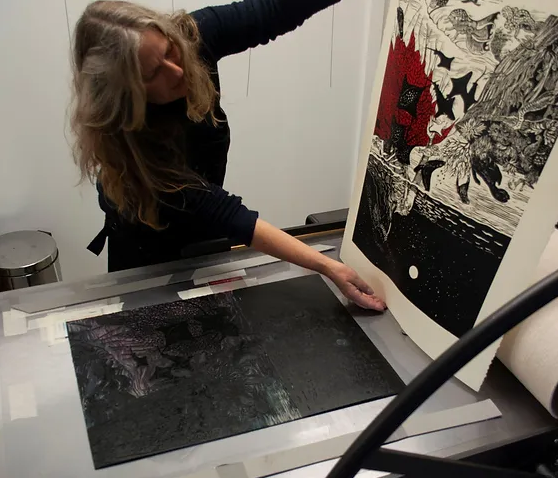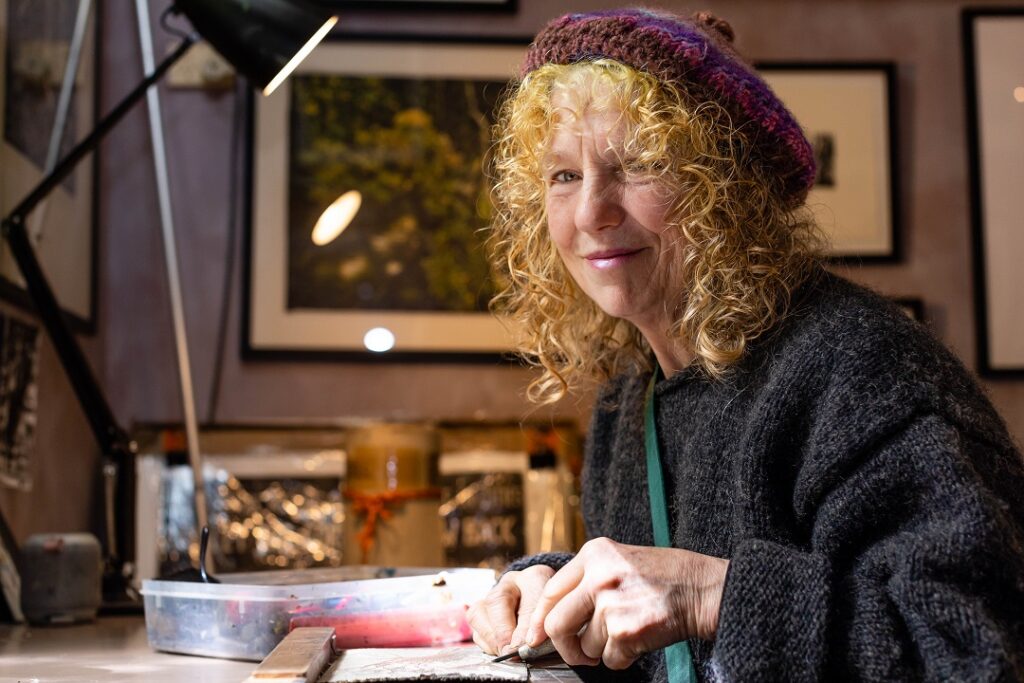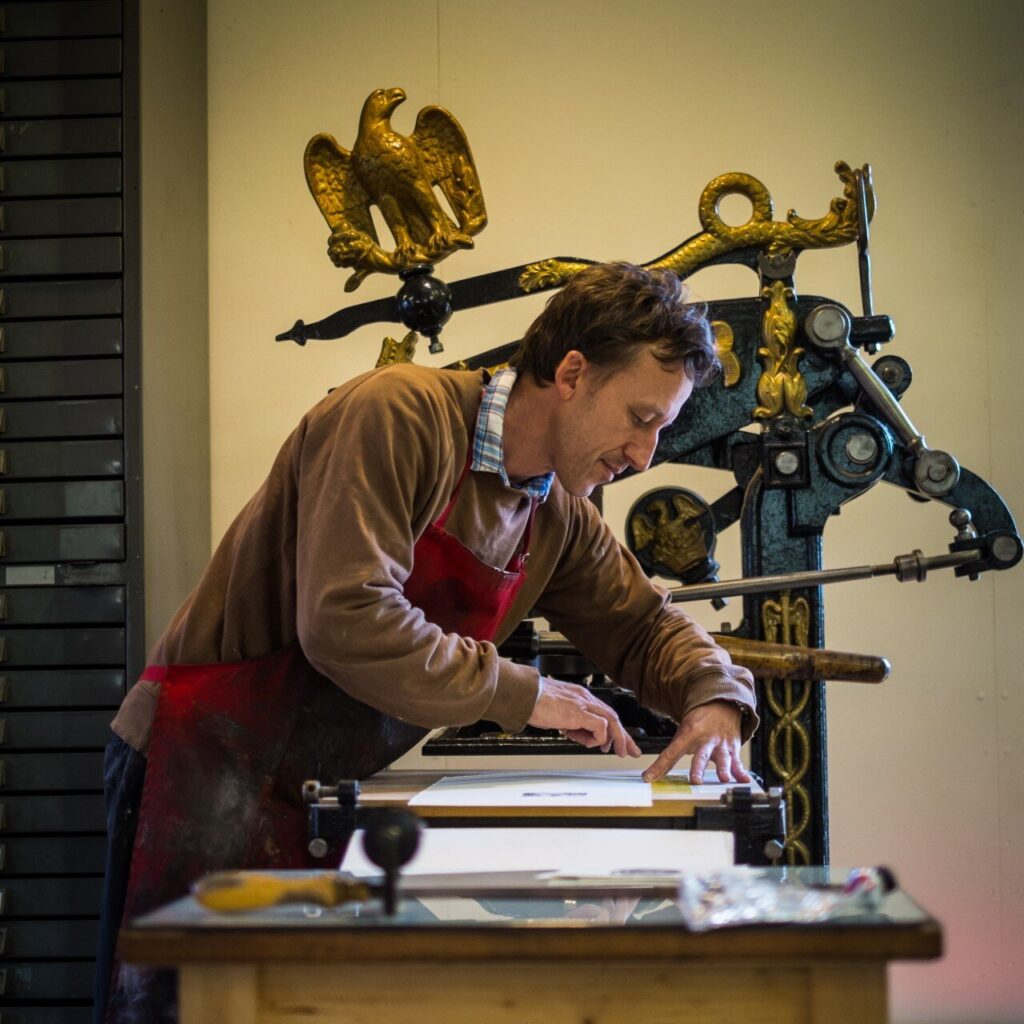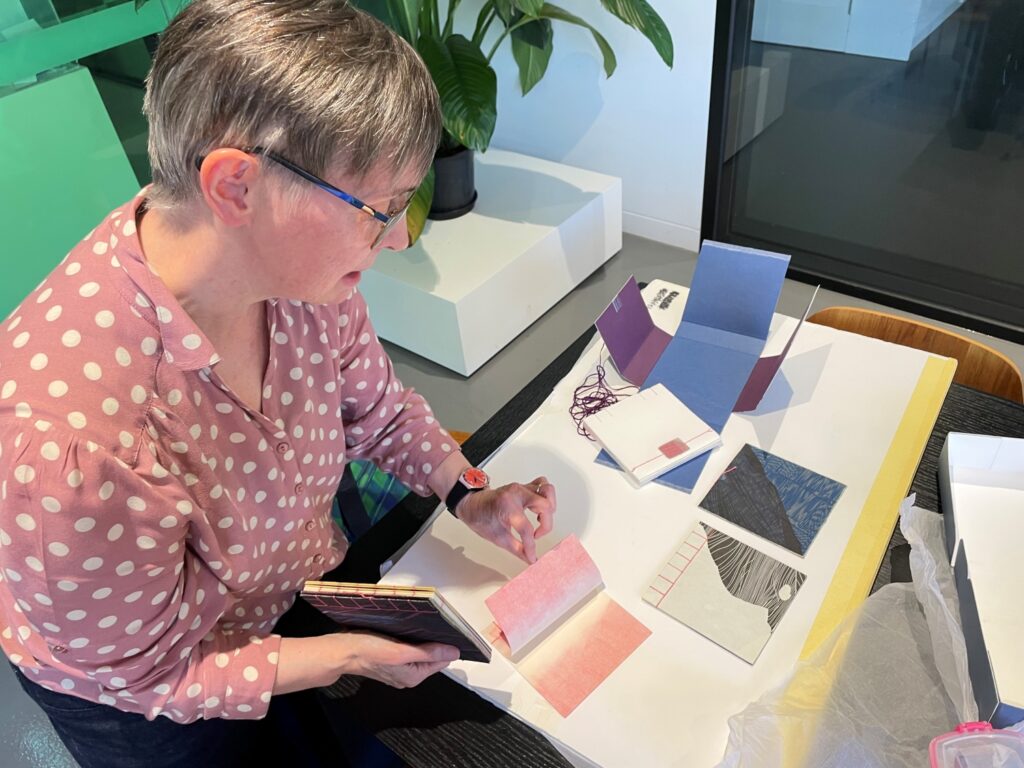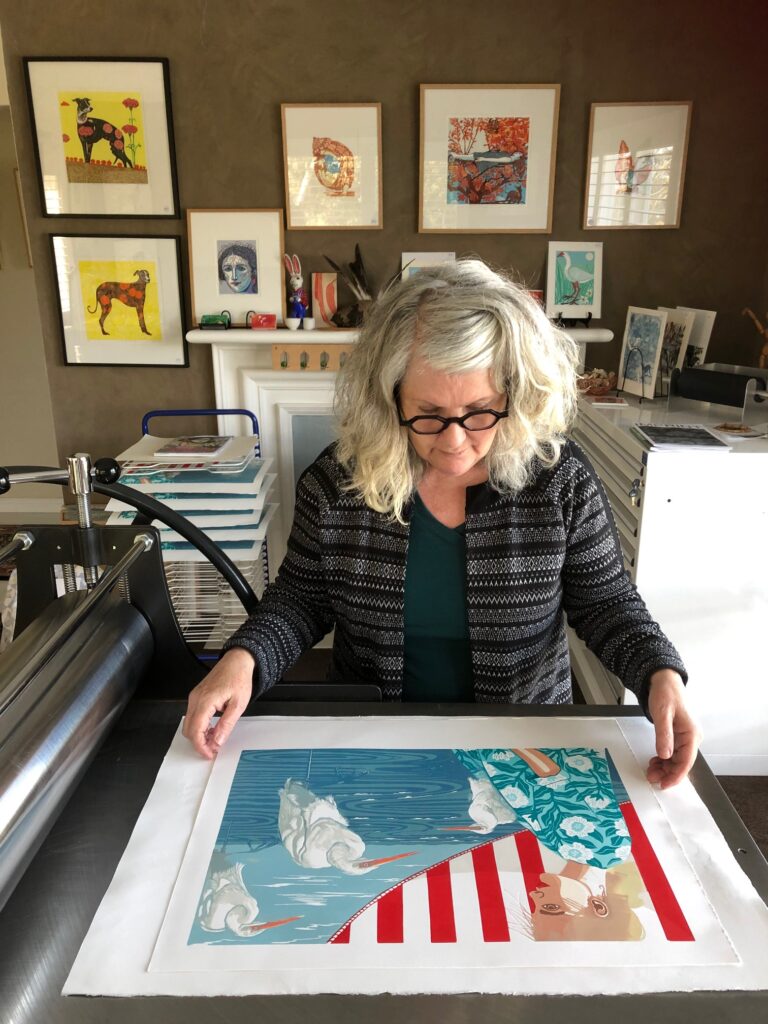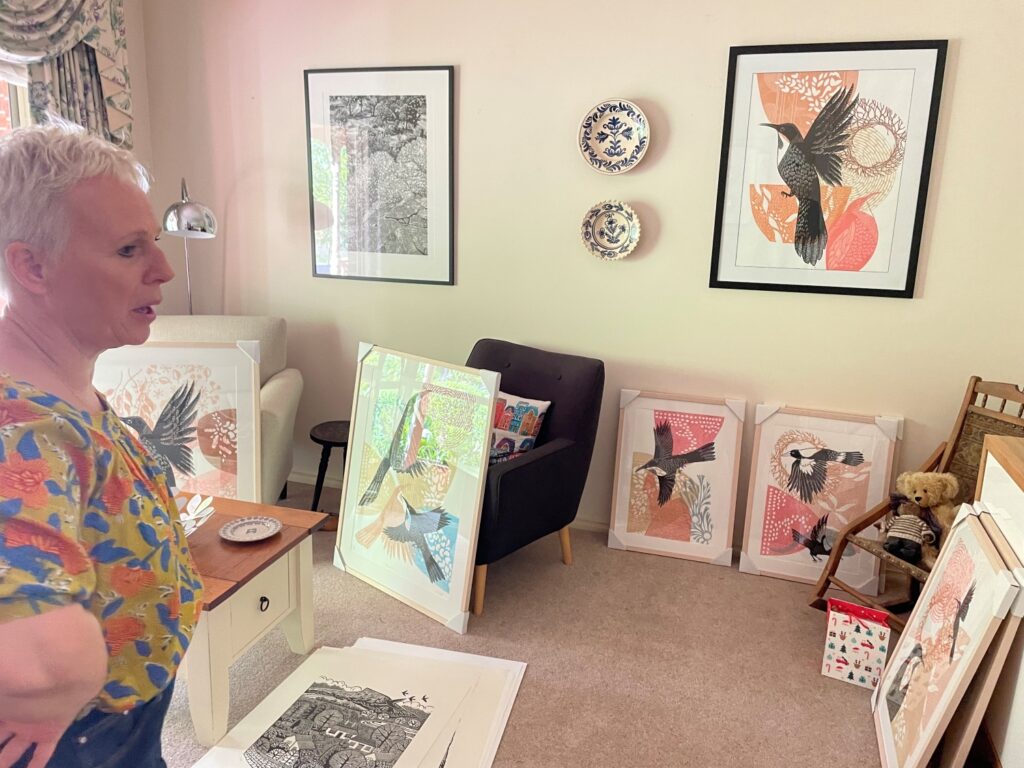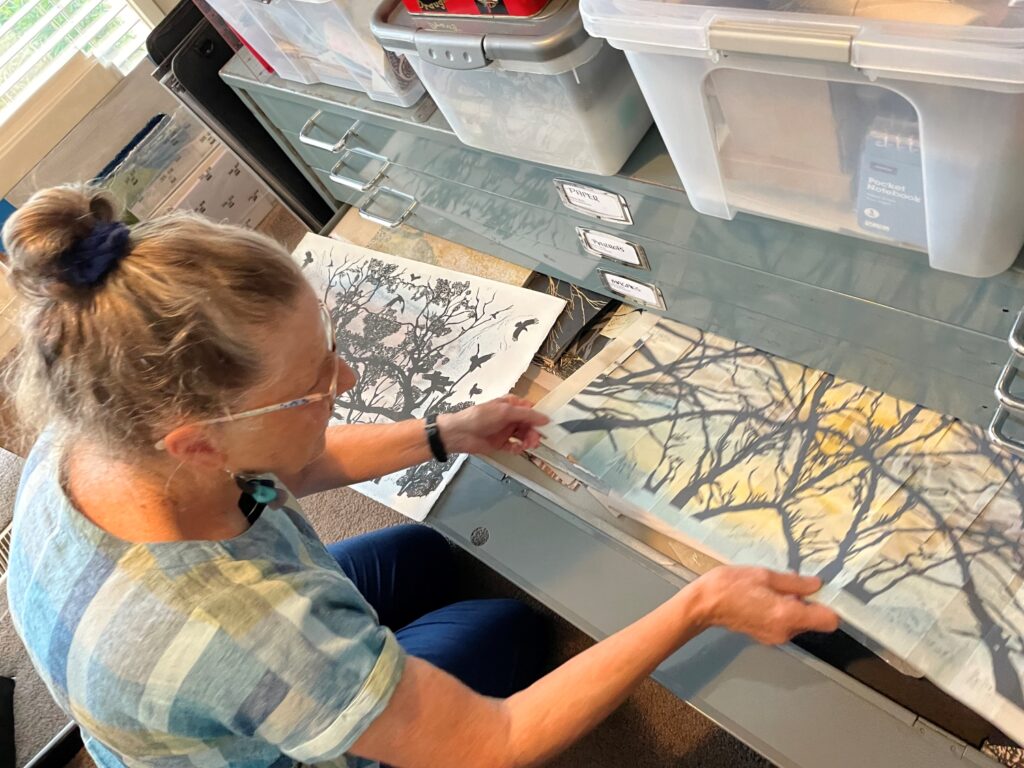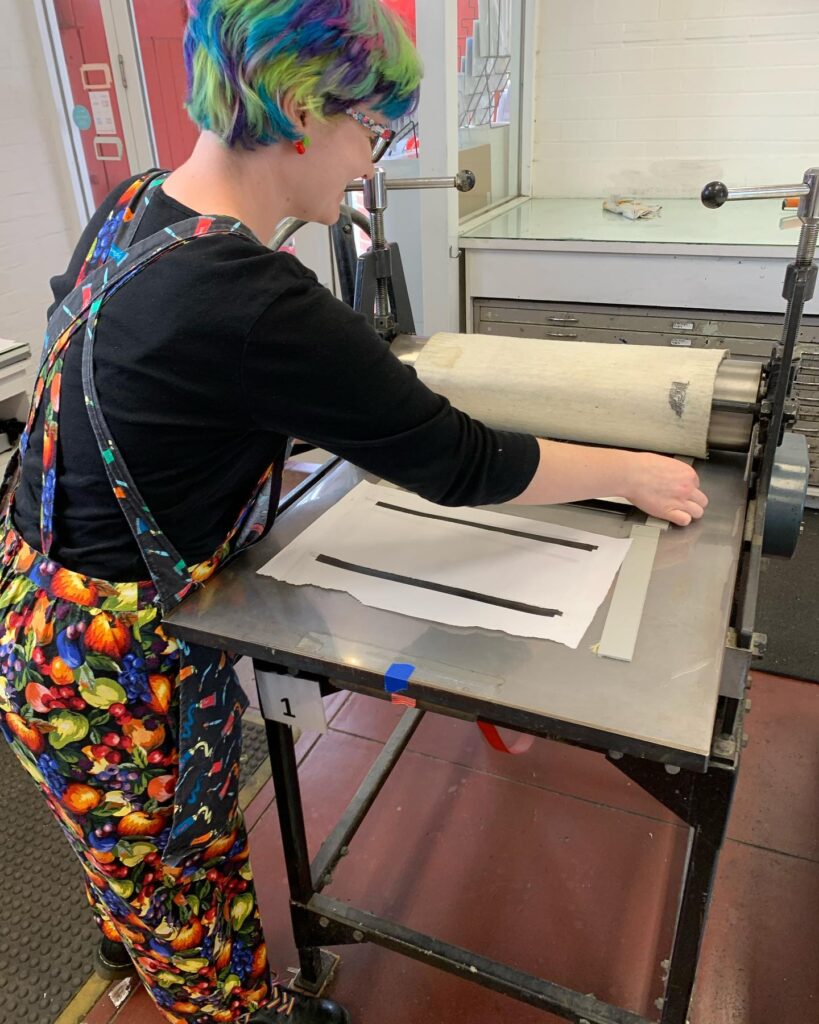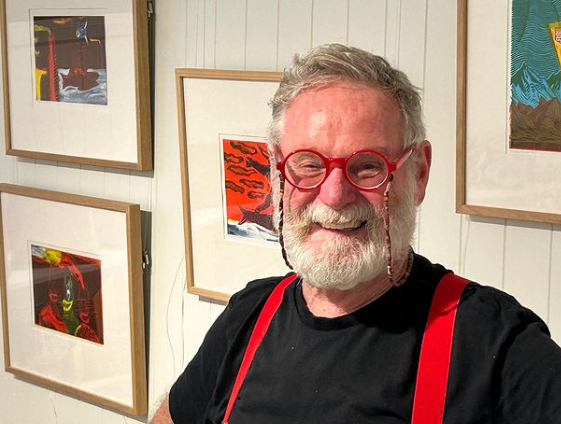LINO 2024
Not Your Kitchen Lino
Burrinja Gallery presents a showcase of contemporary print-making with a special focus on lino print applications.
Featured are limited edition prints, artists books, scrolls and sculptures.
The Public Program

Introduction to Linocut Printmaking with Rona Green
SOLD OUT Saturday 13 July 10am – 4pm | Arts Workshop
SOLD OUT Saturday 20 July 10am – 4pm | Arts Workshop
During this one-day workshop run by Rona Green, you will be shown step-by-step all you need to know about the fundamentals of linocut printmaking. This includes preparation and testing, how to cut a linoleum block and how to print a linocut by hand (onto rice paper using a baren). Gain solid knowledge about materials, tools and techniques through the creation your own special set of linocut prints. This comprehensive workshop is suitable for absolute beginners or those wanting to refine basic skills, ages 16 and up.
Rona is an award winning artist and art educator with thirty years of professional experience who enjoys sharing expertise with individuals keen to learn about the magic of printmaking.
* Workshop bonus – each participant will receive a gift of an original limited edition miniature linocut print by Rona Green.
Please note:
– Bring an apron and wear clothes that you don’t mind getting inky.
– You will be using a linoblock sized 15 x 20 cm for the workshop.
– Feel free to bring along some drawings / photos to reference or pre-prepare an image otherwise inspiration is provided (keep in mind your linoblock will print in reverse).
Everything supplied.
BYO Lunch.
$195 per person inc. equipment, tools, materials and notes.
Please note this workshop is limited to 8 places.
The Artists
Bronwyn Rees
Bronwyn Rees has been an artist in residence at Firestation Print Studio since 2004, during which she has had a number of solo and group exhibitions at the Firestation Gallery. Her artist books are in many libraries, including the National Library of Australia and the British Library. When Covid lockdowns hit inner city Melbourne, she had to pivot away from her usual style of large and messy intaglio printing, which was impossible in a domestic setting. While walking within her permitted 5km radius, she took many photos and thought about how she could turn these into prints. Hence her next series of works was born.
Carolyn Vickers
Carolyn Vickers grew up on a farm in central Victoria with four sisters also interested in art, lots of dogs, cats and parents who encouraged their artistic endeavours. She chose printmaking when doing a B.A. of Fine Art at Prahran College in the ’80s and, although she works in a range of mediums, in the last five years she has returned to printmaking – particularly linoprint. She enjoys the bold graphic effects and surprise element uncovered when printing linocuts and the mindfulness that carving brings. While challenging and frustrating at times, she finds it is always full of exciting possibilities.
Chris Lawry
Chris Lawry has been creating traditionally printed lino cut prints by hand, on an etching press onto archival Italian or Japanese paper, for about 15 years. The style of lino cut design she favours, is tonal – black, white, and shades of grey. She enjoys every aspect of the process: the choice of subject, the choosing of a cutting style, making the thousands of necessary decisions during the cutting itself, and finally the thrill of pulling a new print off the press. Recently her subject matter has included the forests and towns of the Dandenong Ranges, where she lives, and the ongoing drama of air and water.
David Frazer
David Frazer is known for his wood engravings, linocuts, etchings, lithographs, sculptures and paintings. He has held over 40 solo exhibitions in Australia, London and China and has won many art awards locally and internationally. In 2007, the ABC produced a documentary on him as part of the “Artist at Work” series. David’s work explores a sense of place, and accompanying emotions of longing, nostalgia and isolation. The universal yearning to be ‘somewhere else’ is a common thread throughout his figures amidst bleak Australian landscapes, along with those fixed in a foreign locale. Combined with this is a gentle sense of whimsy and humour.
Elizabeth Banfield
Elizabeth Banfield trained in printmaking at the South Australian School of Art and moved to Victoria in the late 1980s. Her work is now held in public and private collections in Australia and overseas. In her current art practice she makes fine line linocuts and artist books, predominantly using Japanese papers. Her works typically feature the Australian landscape and often use more than one sheet of tissue paper, stitched together with embroidery thread to intensify the colours and layers of fine lines.
Gwen Scott
Gwen Scott studied art at the University of Newcastle in NSW, majoring in painting and drawing. She came to printmaking later in life and now specialises in the reduction technique. The heart of Gwen’s practice is her passion for colour and imagined narratives sourced from her interests in classical mythology, the human form, animals, gardens, coastal landscapes and her everyday surroundings. Each print is created from one linoleum block, where she carves and then prints each colour separately until the print is completed and the block is substantially ‘reduced’.
Jan Liesfield
Jan Liesfield completed her Bachelor of Education in 1988 with a major in art and has been teaching art for 18 years. She joined Firestation Print Studio in 2014 and has been a keen Lino Cut artist ever since. Exploring the beauty and lyricism of ‘place’ is Jan’s primary focus when creating her detailed lino prints. Every destination becomes an opportunity to tell a story through the art of printmaking. Jan’s works feature intricate mark making, creating form and texture within her images which are typically printed by hand with a wooden spoon.
Karen Neal
Karen Neal loves the versatility of printmaking techniques, from the generation of multiple images in an edition to the freedom creating one-of-a-kind works and 3D sculptural book objects. Her early background studies in Biological Science greatly inform her artistic practice, as she now focuses on capturing and celebrating the local bird and plant species of her immediate environment. Through her art, she aims to draw attention to the natural world and inspire others to connect with and protect it.
Kat Parker
Kat Parker is an emerging artist based in Shepparton. In 2021, she graduated from RMIT with a Bachelor of Fine Art, specialising in printmaking. Her artworks have recently been included in the Waterhouse Natural Science Art Prize at South Australian Museum, Experimental Print Prize at Castlemaine Art Museum and Geelong Art Gallery’s Acquisitive Print Awards. Moving from regional Victoria to Melbourne for university initiated an interest in humanity’s dysfunctional relationship with the natural world, and her printmaking and paper art aim to encourage an appreciation for, and love of, nature.
Kylie Watson
As a printmaker, Kylie Watson creates finely detailed, intricate and large-scale linocuts, which express in a poetic form the motifs of her body, type and portrait drawings that inform the visual narrative of her paper sculptures and artist books. Blocks are printed using etching inks and fine Japanese papers, which create a sense of tonality and depth within the images. Her prints are handprinted and overlayed with their delicate textures boldly torn, stitched and hand-sewn to recreate a new entity, often with the scars of its recreation on show.
Peter Ward
Peter Ward was born in rural Victoria, grew up in suburban Melbourne and attended Swinburne Technical College, where he graduated with a Diploma of Graphic Art and developed an interest in printmaking. He later set up a screen printing studio in the Gold Coast hinterland and won the Gold Coast Art Prize. Following five years in Sydney and a stint in Tuscany exploring various mediums, he chose to focus on relief printmaking. He pushed the technique by incorporating multi-block colour, underpainting, hand colouring, weaving, quilting and collage. Peter’s images are often rendered in bright colour, sometimes with a tension between the attractiveness of the surface and the darkness of the underlying idea.
Rona Green
Since studying fine art at La Trobe University in the early 1990s, Rona Green established an enduring interest in figuration and notably a dedication to the depiction of peculiar hybrid characters. Fueled by a fascination with the animal, she explores ideas about persona, transformation and the absurd. Her diverse interests include Egyptian art, secret societies, science fiction, B-grade movies, TV, tattooing traditions, and subcultures. She lives and works in the Dandenong Ranges, and her works on paper are represented in over seventy Australian and international public collections.
banner image credit:
Rona Green, "Lucky LeVon", 2022


